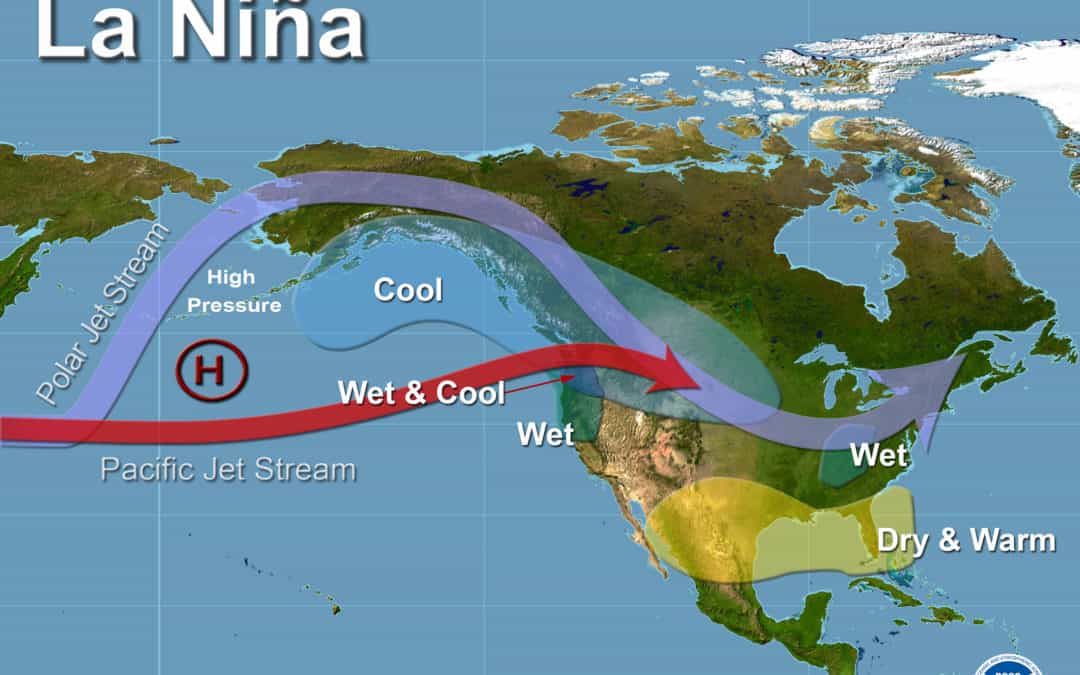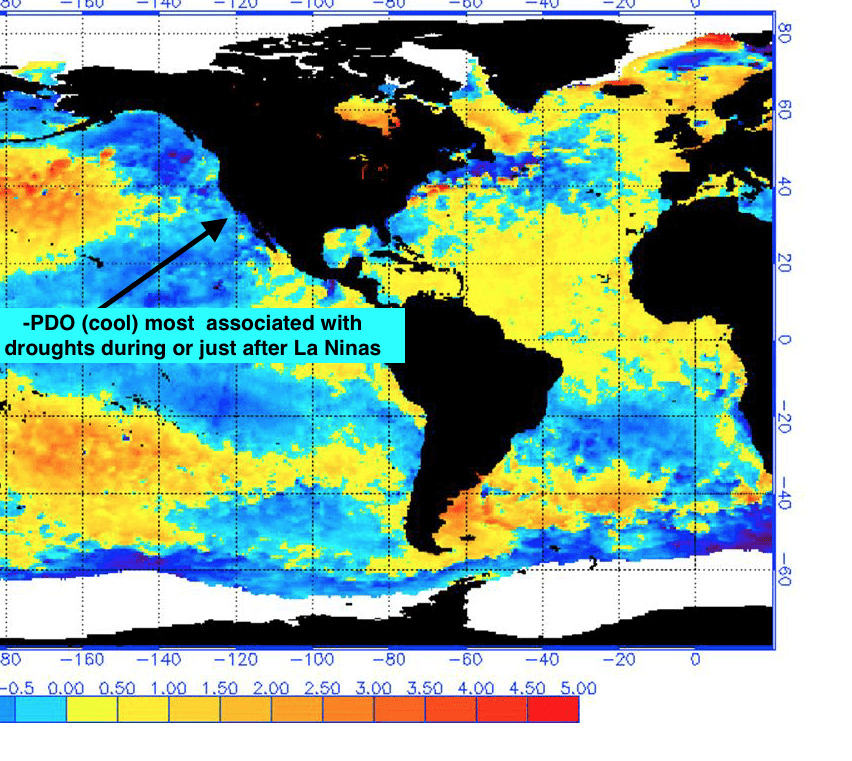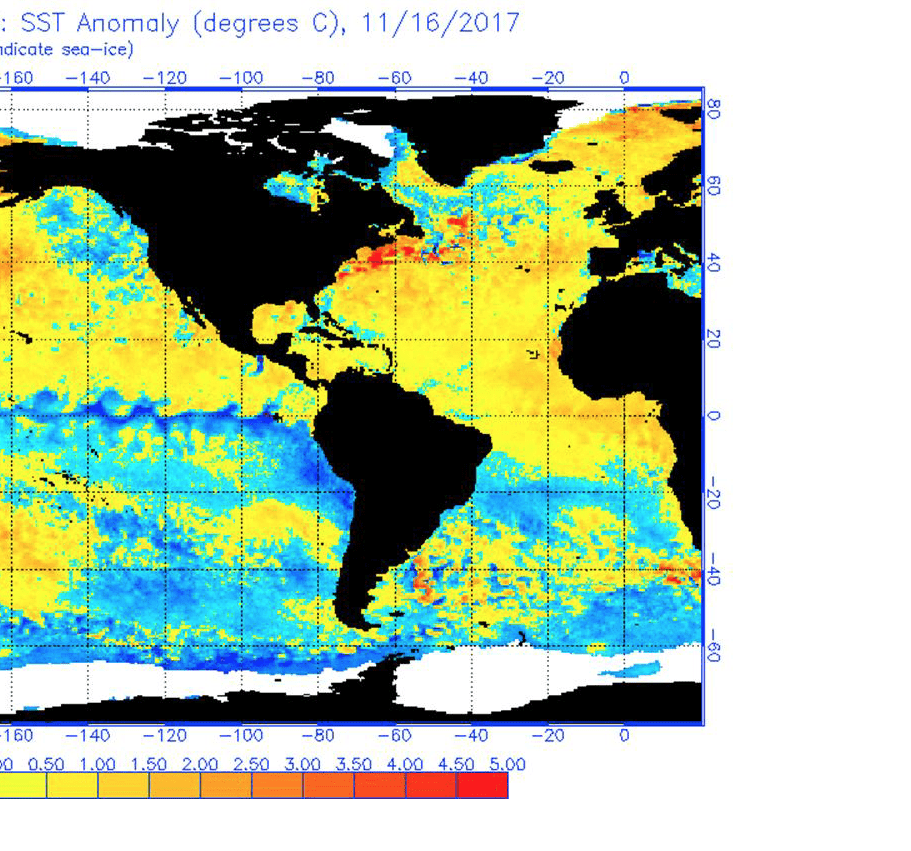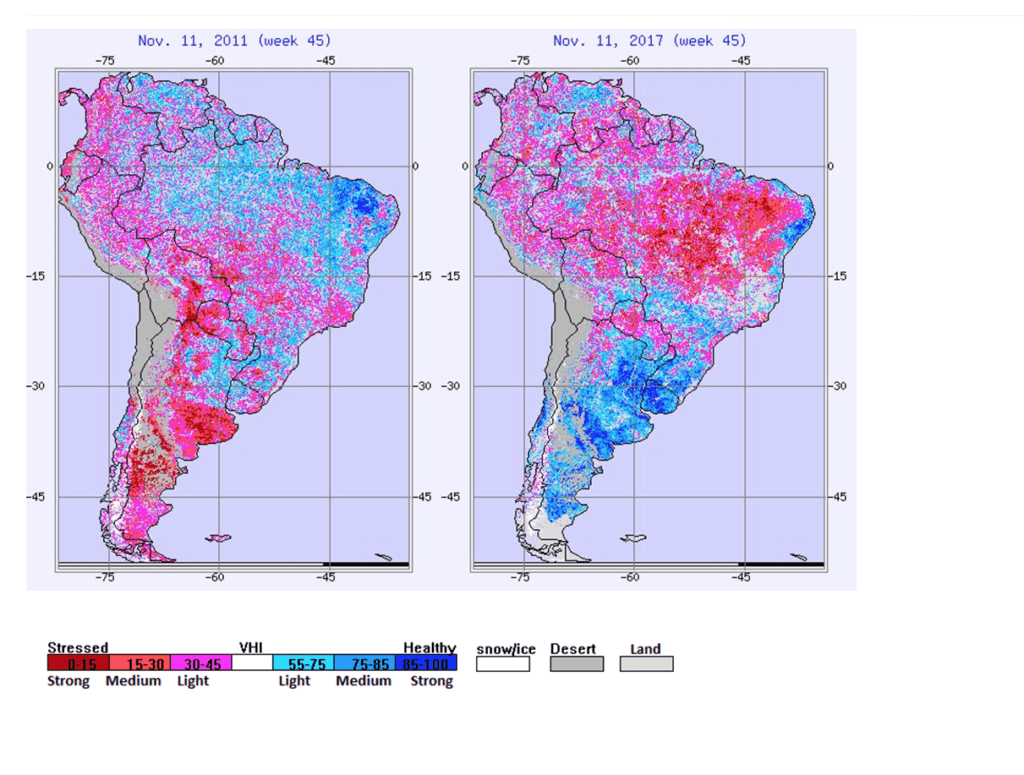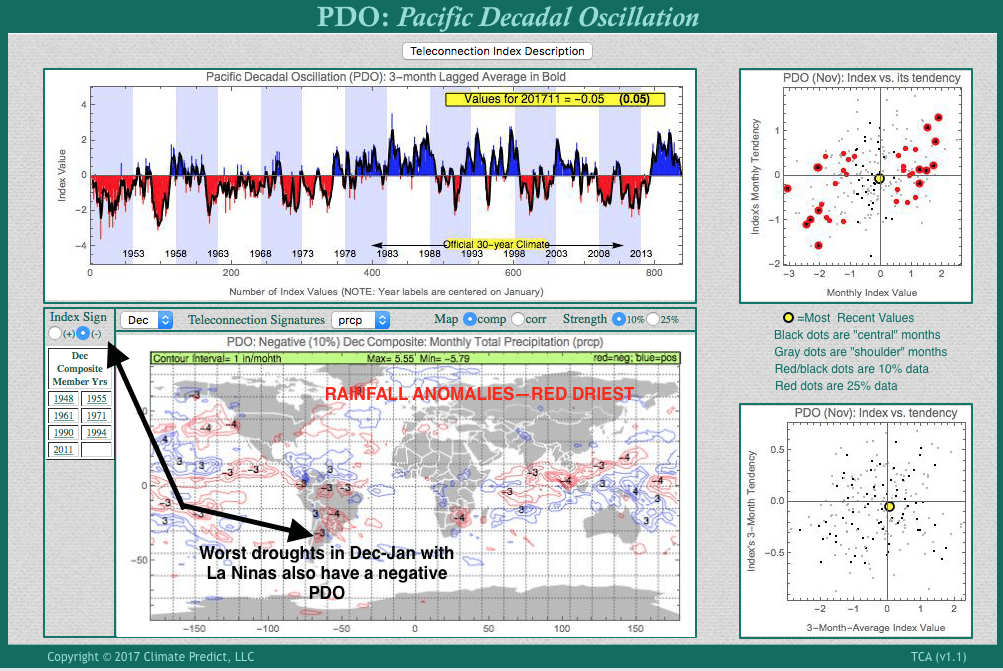There has been some talk that the present La Nina is the strongest since 2011-2012; when droughts plagued, not only southern Brazil and Argentina soybeans, but U.S. crops the following summer. This resulted in a bullish long term cycle in grains. The present weak La Nina can be compared to one that resulted in major crop problems for grain. Climatech below, shows it is not as strong as that year. Additionally, the key for global grain weather is not only La Nina but what the PDO does over the next 6-9 months. Notice how much cooler it was during the 2011-2012 in the N. Pacific –> -PDO.
PDO in 2011
The MEI index measures both atmospheric and oceanic conditions. Positive (negative) values indicate El Nino (La Nina) conditions are present. The stronger the value, the greater the El Nino/La Nina. As you can see in the values below, we the 2011-12 was much stronger in November than current values. [Red El Nino, Blue La Nina]
La Nina and the Grain Market
Soil moisture levels were much drier in Argentina during other La Nina events than they are now. The sudden rally in soybeans, may be due to seasonal demand factors, that we pointed out often happen later in Nov-Dec, not just the talk of La Nina. Cool weather is likely in Argentina with off and on bouts of dry weather. Right now, from a study we did a week or so ago, we expect above normal soybean production in Brazil and normal to slightly below trend-line yields in Argentina the next few months.
My greatest concerns, as far as grains are concerned and La Nina, is for harvest and maturity delay issues for Australia wheat, a lower Argentina wheat crop and the potential for weather related issues of Plains wheat this winter and potentially next spring. But we have to see if the PDO goes negative come next spring to get a roaring bull market.
The world is awash in wheat and other non weather factors with regards to Egyptian tenders, China lowering their export price a while back and the huge Russian crop hitting the market have all been negative factors.
Other markets affected:
- Typically, La Nina’s favor improving global coffee production, the one exception is sometimes in Columbia where too wet conditions could lower crops, but that is still potentially at least 3-4 months away. Brazil is improving.
- La Nina also favors normal to above normal trend-line yields for west African cocoa and a low chance for a severe Harmattan—forget about any major bull market based on weather.
- Heavy rains can sometimes affect coal production and mining operations in Australia and lower Palm oil production in Malaysia.
For more information on natural gas and how to trade these markets, email at subscriptionsbestweather@gmail.com

